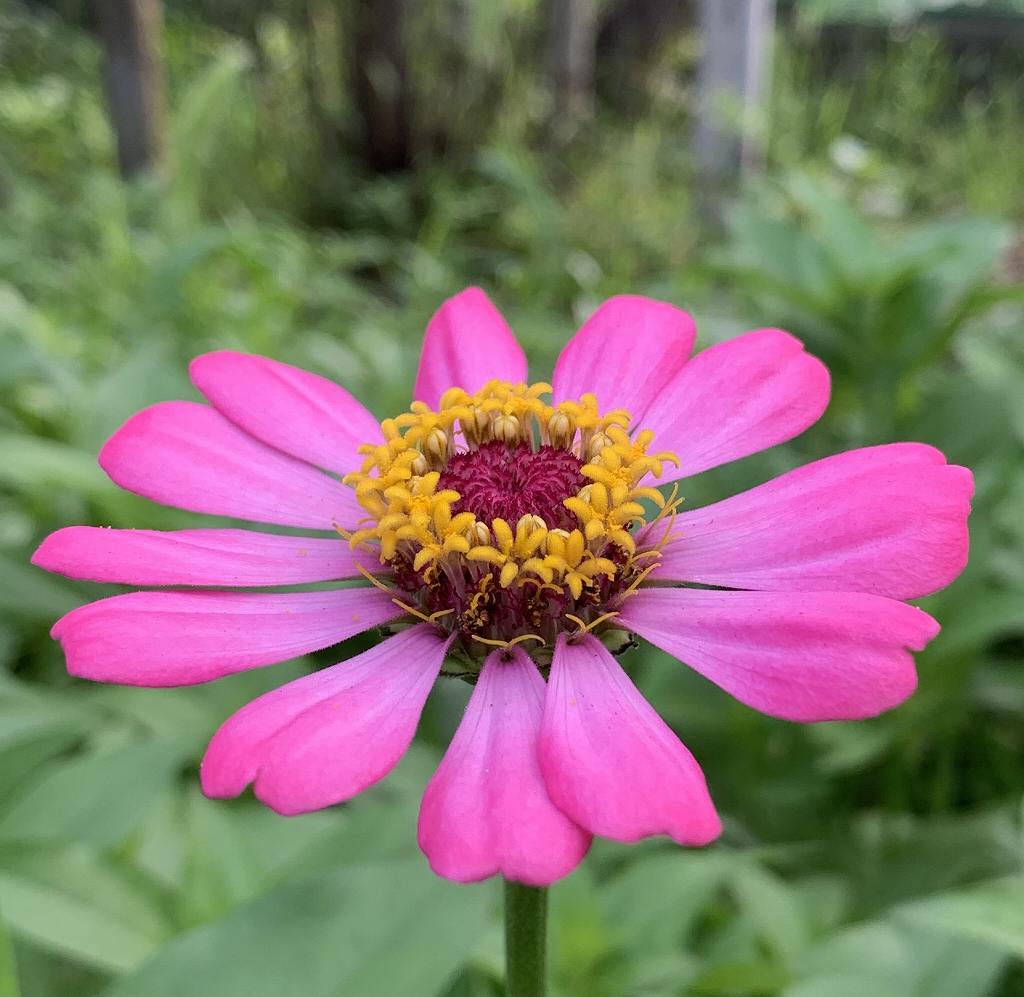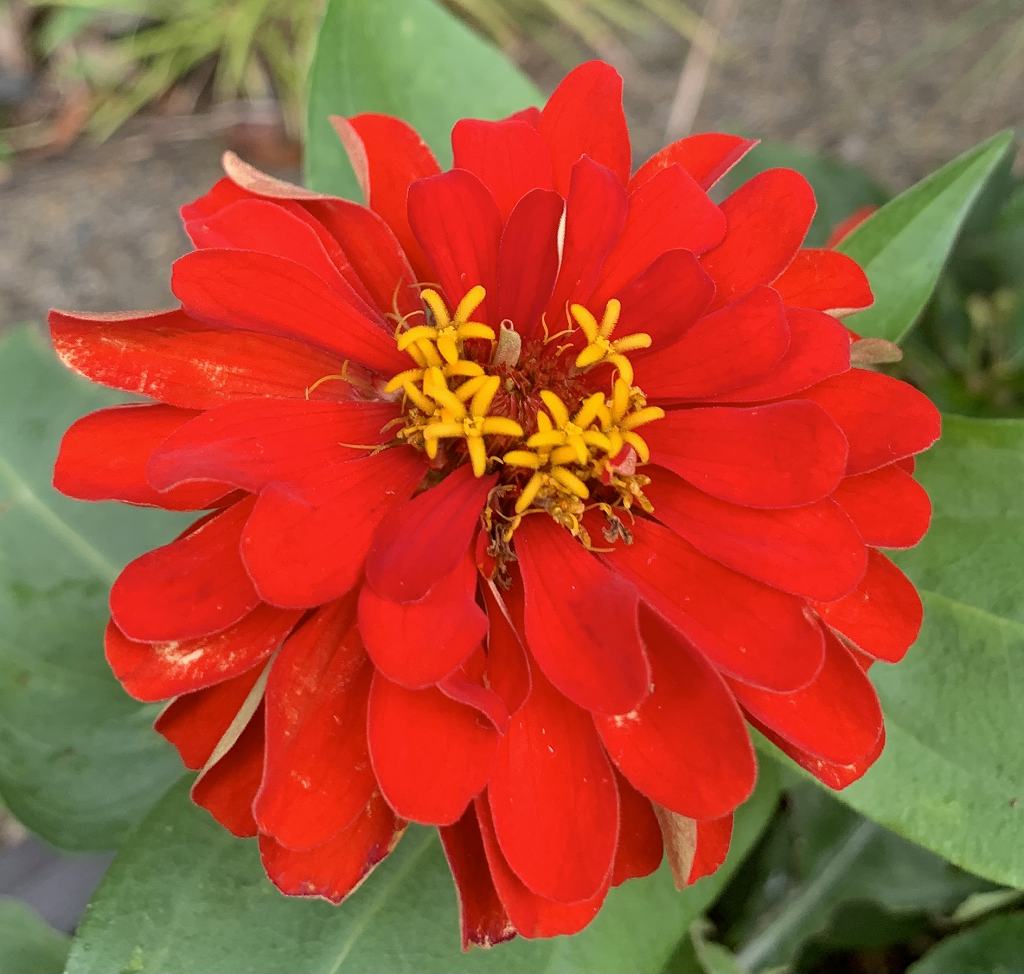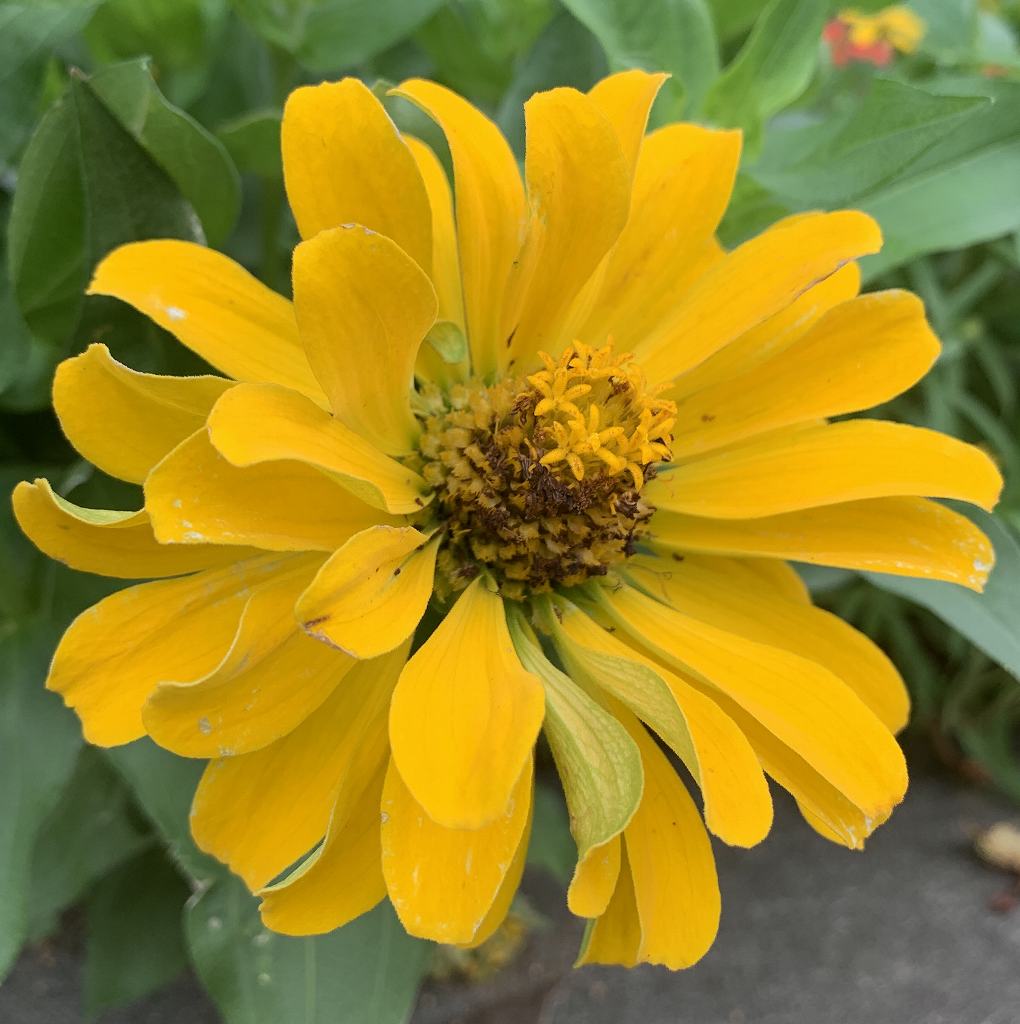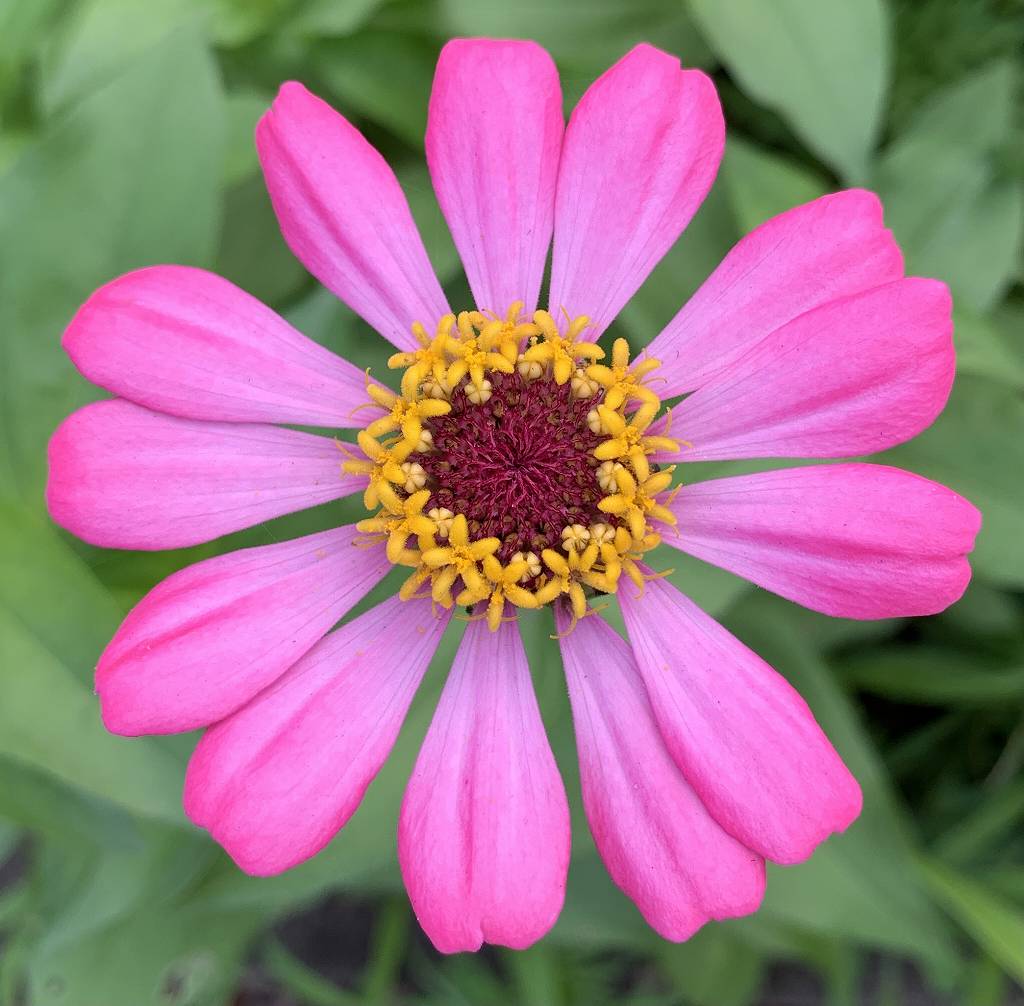ヒャクニチソウは直射日光や高温、乾燥に強い花です。開花期間が長く、切り花も丈夫で長持ち。日本では仏花として定着しました。
Zinnia is a flower that is resistant to direct sunlight, high temperatures, and dryness. The flowering period is long, and the cut flowers are durable and long-lasting. It has become established as a Buddhist flower in Japan.
【仮名】ヒャクニチソウ, ジニア, ウラシマソウ, チョウキュウソウ
【和名】百日草, 浦島草, 長久草
【英名】Common Zinia, Youth-and-old-age
【学名】Zinnia elegans
【誕生】07/ 26, 10/ 03, 12/ 22
【開花】06, 07, 08, 09, 10月
【花色】White, Pink, Red, Purple, Yellow, Orange
ヒャクニチソウ
ヒャクニチソウの原産地と伝搬

ヒャクニチソウはキク科の多年草です。原産地はメキシコで、アステカ人が栽培。18世紀にスペインやインド経由で欧州へ。20世紀に北米のカリフォルニアで多くの品種が育成されました。
ヒャクニチソウの花の色と形

ヒャクニチソウの原種は舌状花が紫色、筒状花が黄色です。しかし品種改良を経て、花は青を除いて色々に。花形も大・中・小、ダリア咲き、マツムシソウ咲き、ねじれ咲きなど多様です。
ヒャクニチソウの日本への渡来

ヒャクニチソウが日本に渡来したのは江戸時代の末期。原種に近い一重咲きでした。花を逆さまにすると帽子のような形になったので別名「シャッポバナ」。戦後、品種改良が進みました。
ヒャクニチソウの開花期間

百日草の名前の由来は開花期間が初夏から晩秋までと長いから。浦島草や長久草という別名もあります。個別の花は1~2週間で散りますが、次から次へと新しい花芽ができ、咲き続けます。
ヒャクニチソウの広がりと定着

ヒャクニチソウは直射日光や高温、乾燥に強い花です。開花期間が長く、切り花も丈夫で長持ち。そのため日本では庭咲きの花でなく、仏様にお供えする仏花として広がり、定着しました。
ヒャクニチソウの花言葉

ヒャクニチソウの花言葉は不在の友を思うこと。欧州では友情を象徴する花です。絆や、いつまでも変わらぬ心という意味も。一方、ブラジルではカーニバルに不可欠な幸福を招く花です。
Common Zinia
Zinnia is a perennial plant of the Asteraceae family. Originated in Mexico, cultivated by Aztecs. To Europe via Spain and India in the 18th century. Many varieties were cultivated in California, North America in the 20th century.
The original species of Zinnia has purple tongue-shaped flowers and yellow tubular flowers. However, after breeding, the flowers are various except blue. There are various flower shapes such as large / medium / small, dahlia bloom, pincushion flower bloom, and twist bloom.
Zinnia came to Japan at the end of the Edo period. It was a single bloom close to the original species. When the flower is turned upside down, it looks like a hat, so it is also known as “Shappobana”. After the war, breeding progressed.
The name Zinnia is derived from the long flowering period from early summer to late autumn. There are also other names such as Urashima grass and Nagaku grass. Individual flowers disperse in a week or two, but new flower buds are formed one after another and continue to bloom.
Zinnia is a flower that is resistant to direct sunlight, high temperatures, and dryness. The flowering period is long, and the cut flowers are durable and long-lasting. Therefore, in Japan, it spread and became established as a Buddhist flower to offer to the Buddha, not as a flower that blooms in the garden.
The flower language of zinnia is to think of an absent friend. In Europe, it is a flower that symbolizes friendship. It also means a bond and a heart that never changes. On the other hand, in Brazil, it is a flower that brings happiness, which is indispensable for carnival.



